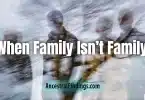Some of the most powerful moments in genealogy happen when we uncover something someone tried to hide. It might be a missing record, a false birth date, or a name that suddenly disappears and reappears under a new spelling. Secrets are part of every family story, and when they surface, they can change how we see everything that came before.
I’ve spent many years researching family lines, and I’ve learned that every family, no matter how ordinary, carries something it once chose not to share. Some secrets are harmless. Others reach so deep that they still shape the generations that followed. In genealogy, truth and silence often meet in the same place—and that’s where some of the most meaningful work begins.
Why Families Keep Secrets
Families keep secrets for one simple reason: protection. Sometimes they want to protect reputation, sometimes relationships, and sometimes their own hearts. In earlier centuries, life was ruled by reputation and social order. A single rumor could cost a person a marriage, a job, or their standing in the community.
Consider a woman in the 1800s who had a child outside of marriage. In many towns, she risked losing her home, her church membership, or even her ability to earn a living. Hiding the truth was often her only option. The same could be said for men who lived double lives, for adoptions arranged quietly, or for ancestors who reinvented themselves after migration.
People hid the things that could not be explained in public. A change of name, a sudden move, or a vague death record often hints that someone decided the past should stay buried.
Reading Between the Lines
When I’m studying a record set, I often pause when something doesn’t fit. A date that seems impossible. A child who vanishes from one census but appears under another surname later on. Patterns like these are the fingerprints of secrecy.
Early genealogists used to take records at face value. Today, we know that understanding what’s missing is as important as what’s written. The gaps tell stories too. A missing marriage license might signal a union that wasn’t officially recognized. A child listed as a “ward” or “servant” could have been a relative born under complicated circumstances.
Reading between the lines means understanding that people of the past were navigating pressures we can barely imagine. The record may look like deception, but often it was survival.
Secrets Built Into the Records
The structure of old record-keeping often helped hide the truth. Church clerks or census takers sometimes used vague language to protect community members. Terms like “adopted,” “ward,” or “niece” could mean many things depending on the situation.
Even government documents were designed with discretion in mind. Birth records could list false fathers; adoption papers might be sealed for decades. After the early 1900s, many U.S. states passed laws that permanently closed adoption files. The intent was privacy, but it also created barriers for later generations trying to understand their origins.
Genealogists working with these records must balance accuracy with empathy. It’s not about exposing hidden details for curiosity—it’s about restoring context so descendants can understand the choices that shaped their family’s story.
When Secrets Shape Identity
Some secrets live so long that they become part of a family’s identity. A hidden heritage, a concealed adoption, or an unknown ancestor can echo across generations.
I’ve seen families who believed for a century that they were descended from one ethnic group, only to learn through records and DNA that their roots told a different story. Sometimes this discovery brings pride; other times, confusion or denial.
Genealogy forces us to face these moments honestly. It invites us to ask not just what happened, but why it was hidden.Understanding that difference transforms research from fact-finding into healing.
The Emotional Cost of Truth
Every genealogist eventually encounters a moment when new information creates discomfort. The excitement of discovery quickly turns into hesitation: should this be shared? What will it change?
I’ve faced that question many times. It’s tempting to believe that all truth is good, but in practice, truth can be painful. Finding that an ancestor abandoned a family, committed a crime, or hid a relationship can challenge long-held beliefs about who we are.
When I reach that point, I remind myself that genealogy is not about judgment. It’s about clarity. The goal is to understand, not to condemn. Sharing new information with living relatives must be done carefully and respectfully. Some may not be ready to hear it, and that’s all right. The record can wait; people’s emotions cannot be rushed.
Secrecy and the Law
Historical laws often created the conditions for secrecy. In the early twentieth century, unwed mothers were often sent away to maternity homes where they gave birth in secret. Their children were adopted under sealed records. In some cases, birth certificates were rewritten entirely.
Similar practices existed for other social situations—mixed-race marriages, children born during wartime affairs, or families escaping political persecution. The law often reinforced the silence.
For genealogists, these legal systems explain why certain documents simply don’t exist. The absence of a record isn’t failure; it’s evidence of how society worked. Knowing the law of the time period helps fill in the gaps without speculation.
DNA and the End of Secrecy
Modern DNA testing has brought many family secrets to light. In some ways, it has ended the era of hidden ancestry. A single test can confirm or contradict generations of family stories.
For adoptees, this technology has been life-changing, allowing reunions that were once impossible. For others, it has exposed secrets that some relatives thought were safe forever.
I’ve spoken with researchers who discovered unknown half-siblings or parents who never intended to be found. These moments are powerful and emotional. DNA doesn’t lie, but it doesn’t explain either. Behind every test result is a human story that must be handled with compassion.
The ethics of using DNA in genealogy are still developing. Many professionals follow a simple rule: if sharing information might harm someone’s privacy or emotional well-being, hold back until it can be handled with care.
When Silence Speaks Louder
Sometimes, what people don’t say is the biggest clue of all. In old family letters or journals, a sudden lack of detail often signals something being left out on purpose. Entire chapters of a family’s past can vanish from oral history because no one dared to repeat them.
I once traced a family that moved three states away with no apparent reason. Their records simply stopped in one county and started anew somewhere else. Decades later, I found a court case involving their name in the original town—an event they had erased from memory. They had reinvented themselves. That discovery changed how their descendants understood their own history.
Genealogy often restores voices that were silenced. By finding the missing context, we give those ancestors the dignity of being known as they really were.
The Balance Between Truth and Healing
Telling the truth about the past can bring peace, but it can also reopen wounds. Some families prefer to leave certain chapters closed. Others feel relief once everything is known.
My approach has always been to tell the story completely, but with sensitivity. When writing reports or articles, I separate fact from interpretation. Facts belong to history; interpretation belongs to discussion. If a discovery might affect living people, I reach out privately first.
In the end, the purpose of genealogy is not to uncover secrets for curiosity’s sake, but to understand the human condition. Every record, every silence, every correction adds to that understanding.
What Secrets Teach Us
Family secrets teach us that truth is powerful, but timing and compassion matter just as much. They remind us that people of the past faced pressures we don’t fully grasp today. They also remind us that healing begins with knowledge.
I’ve seen families find closure when a long-hidden adoption came to light, or when a story of loss was finally told aloud. Even the hardest truths can unite rather than divide when they are handled with empathy.
The work of the genealogist is to bring light to forgotten places—to show that even the most painful chapters belong in the family narrative.
Conclusion
Every family carries secrets, and every genealogist eventually uncovers them. These moments can be uncomfortable, but they are also opportunities for deeper understanding.
When we approach hidden stories with honesty and respect, we learn more than dates and names. We learn how people survived, adapted, and loved in spite of fear. The price of secrets is high, but so is the value of truth.
Our ancestors were human, just like us—flawed, complex, and full of stories they sometimes couldn’t tell. When we uncover those stories today, we honor them by seeing them completely.


